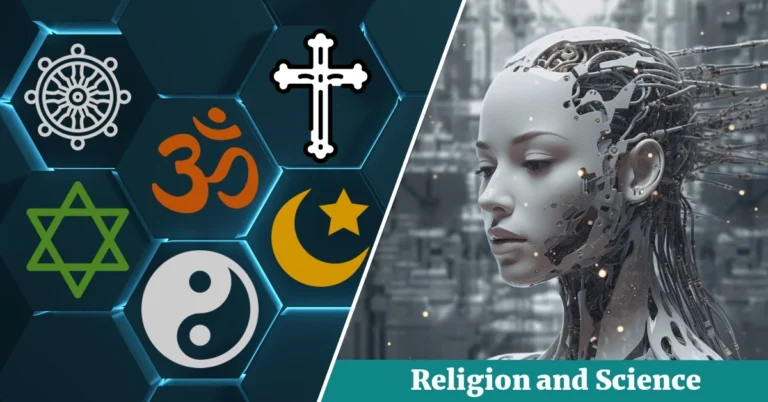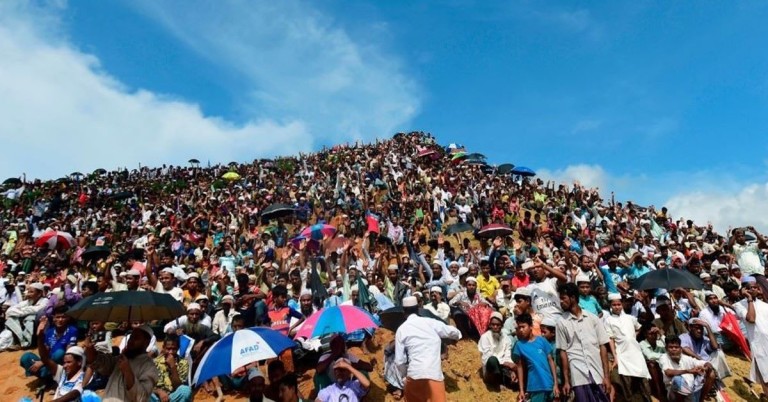African Religions Rituals and Rhythms: The Soul of African Religious Celebrations Of 17.89% of World Population
Last updated on August 14th, 2024 at 12:23 pm
African Religions, the traditional religions of black Africa. They are referred to as traditional in the sense that they are indigenous and are defined by the language (see African Languages) and territory of their adherents.
African religions may be counted in their thousands and interact closely with two of the so-called world religions, Christianity and Islam. Both of these have long been part of Africa’s religious history; as such they have undergone considerable localization and for these reasons could also be said to form part of the traditional religions of Africa.
Small Jewish communities have also existed in Africa for centuries, mainly in North Africa and Ethiopia, and from the 19th century Hinduism, Jainism, and Sikhism have been established in eastern Africa.
More recent times have seen the growth of new religions of African origin. Groups concerned with developing an African form of Christianity are the Aladura, or praying, churches of Nigeria; the Spiritist churches of Ghana; the Lenshina Church of Zambia; the Kimbanguist Church of the Democratic Republic of the Congo; and the Ethiopian and Zionist churches of southern Africa. The unusual Muslim Mahdiyyat movement of southwestern Nigeria has attempted to integrate Christianity and Islam. Other new movements—including Mahikari, Tenrikyo, and Soka Gakkai from Japan; Sathya Sai Baba and Hare Krishna from Asia via Europe; and Scientology, among others, from North America—have taken hold in Africa, further increasing the diversity of the religious culture of the continent.
Although described as traditional, the religions discussed here should not be seen as unchanging.
They have undergone, and continue to undergo, modification through interaction with internal and external cultural, economic, political, and religious developments.
It would be a mistake, therefore, to read the past into the present when interpreting the practice of traditional African religions today. They no more replicate past African religious practice than Santería in Cuba, voodoo in Haiti, Winti in Suriname, and Candomble in Brazil are identical to the traditional African religions from which they derive their gods and practices.
Nor should it be assumed that Africa was a mystical garden in which all traditional societies were profoundly and pervasively religious, believing themselves totally dependent on the power and influence of God, gods, and ancestors in every aspect of their life.
As will be seen, the gods are as dependent on people as the people are on them.
Unlike the major world religions, the traditional religions of Africa are based on oral traditions rather than sacred texts, and these traditions have changed in the process of being transmitted. The fact that they were memorized rather than recorded in writing was no doubt partly responsible for this, as was political intrigue, with different factions interpreting a creation myth or hero myth—both widely seen as relevant to a given contemporary situation—to reinforce their own claims and demands. This gave rise to the evolution of rival myths.
THE HISTORY OF AFRICAN RELIGIONS
While the earliest forms of African religion remain unknown, art, particularly rock paintings, some dating from thousands of years ago, and archaeological discoveries provide a glimpse of the cosmology and the rituals of certain African societies prior to the beginnings of Christianity and even further back than that.
The rock paintings of southern Africa (see African Art and Architecture) indicate that the indigenous peoples of that region, the pastoralist Khoikhoi and foraging San (no longer very numerous and now spread over the modern states of Botswana, Namibia, Angola, Zambia, Zimbabwe, and South Africa), practised shamanic rites.
These paintings suggest that the early ancestors of the Khoikhoi and San staged ceremonial dances in which the leader would experience the presence of a sacred power in his body, one that certain animals, among them the eland, were also believed to experience.
He would then fall into a deep trance during which he would be empowered both to embody and control cosmic powers. These are probably not the earliest paintings of formal religious ritual practices in Africa.
The subject matter of these rock paintings is likely to have changed over time, as it clearly did in the rock paintings found in the Sahara and elsewhere.
It is likely that not only shamanism was widely practised across Africa from the earliest times of formalized religion, but also the cult of the serpent.
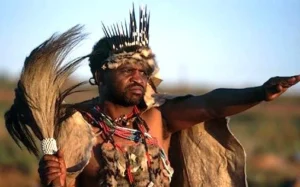
Among the south-eastern Bantu, the python spirit symbolizes the coolness thought essential to cosmic equilibrium, and ceremonies are performed in his honour.
Among the Luba of the Democratic Republic of the Congo and the Zulu of South Africa, he is associated with terrestrial waters; in Luba belief, as the rainbow, he burns rain, while in Zulu belief his actions are beneficial. The Fon of Benin (Dahomey) likewise have long venerated the serpent known as Danbala. The serpent is also worshipped in Haitian voodoo, where it is equated with St Patrick.
Archaeology has done much to improve our understanding of African traditional religion and to enable the development of a historical perspective. The terracotta Janus heads found among the prehistoric sculptures of the Nok Culture of Nigeria, which were produced over 2,000 years ago, suggest the practice of fertility and ancestral rites. In southwestern Nigeria, the Ife bronze heads of the 12th to 14th centuries possibly continue the Nok tradition and may point to the belief that the head (ori) of the king was destined to be the container of sacred power.
The bronze heads produced in the Kingdom of Benin in the 15th century served as burial chambers of the kings.
In southern Africa, the ruins of Great Zimbabwe, dating from the early 12th century, point to the existence in the region of a royal ancestor cult.
Today the traditional religion of the Shona of Zimbabwe is focused on the spirits of ancestors, ancient heroes, and the land.
CREATION MYTHS, THE SUPREME BEING, AND THE TRICKSTER
From creation myths, we learn that humans were once immortal and enjoyed the status of gods, a state disrupted by an act of disobedience often committed by a woman.
God then withdrew to live alone: Ngai, the High God of the Kikuyu, dwells on Mount Kenya and on lesser mountains in the Rift Valley region, leaving the world in the care of his ministers, the lesser gods, and humans with the memory of what it is like to live in paradise.
Creation myths tell of the relations between people and wild and domestic animals, between people of different races and societies, the origins of fire and cooking, of hunting and farming, and the ties and obligations of descent, age, sex, and rank. They function as important philosophical and psychological systems in explaining why sickness, toil, and death are fundamental to human life.
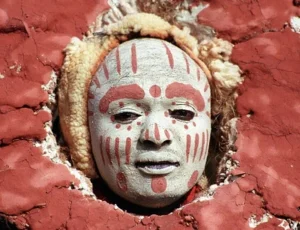
While most traditional religions express a belief in a creator god who is omnipotent, eternal, and beyond the comprehension of ordinary mortals, the idea persists that this god is largely irrelevant to daily life and that it is the lesser gods and ancestors with whom people engage.
In practice, therefore, African religions are considered polytheistic.
Nevertheless, they can be seen as both monotheistic and polytheistic depending on the angle from which they are viewed.
The High God among the Nuer of Sudan is known as Kwoth (spirit), and Kwoth is also the term used for spirits, such as Deng kwoth (“son of kwoth”), that proceed directly from him. Thus the Supreme Being in these faiths is best interpreted as being both one and many. He can, nonetheless, be sacrificed to as creator and judge, and prayed to as a father. Among the Igbo of eastern Nigeria, he may be asked to be the guardian of a child, or, among the Zulu, to divert a thunderstorm from a village.
These personal approaches to the Supreme Being for specific kinds of help should not, however, be allowed to obscure the fact that he is generally seen as operating on a large scale, as the one concerned with the world as a whole, and with life in its entirety, while the lesser gods function mostly on a smaller scale, and are best understood as “forces of nature”. Their concern is with the wind, the lightning, the thunder, the creeks, the fresh water and the fish, and other fauna therein. Providing that they are properly served, they will protect the hunter, guard the rivers and the highways, and help their devotees to fulfil their destinies.
Their assistance does not, however, always guarantee success, and, like charismatic leaders, they are not expected to act in a consistent and predictable manner.
The trickster god prominent in African traditional religious belief and ritual expresses primarily the widespread notion that life is basically uncertain and ambiguous.
The trickster is not always an active deity and may only exist in the context of a story; in the folklore of the Akan-Asantie of Ghana he is a spider and in eastern and southern Africa a hare. Through various stratagems, manoeuvres, tricks, and games, the trickster embodies and plays out the belief that evil cannot be completely overcome, that good can come from setbacks, that life can come from death, and that wholeness consists of integrating opposites.
The actions of the trickster god are double-edged.
Ogo, the trickster god of the Dogon of Mali, destroyed the original plans of the creator god Amma for a perfect world and was capable of restoring them only partially, yet by means of divination Ogo helps human beings to discover the unforeseen dangers of human life.
In the Yoruba tradition, divination and sacrifice, two of the most effective means of uniting the human and the divine, cannot succeed without the intervention and intercession of the apparently capricious trickster deity Eshu, nor can any Candomble, Santería, or voodoo ritual performed to call in the gods from Africa succeed if Eshu is not first appeased in the manner to which he is accustomed. The powers of the gods to do good or inflict harm on their disciples is counterbalanced by the power that the latter have over their gods, the relationship between them being one of reciprocity and interdependence.
Each needs the other in order to achieve a meaningful existence, which for the devotee consists of taking on the character of the god, and for the god in making this possible, hence the Yoruba proverb “character is a god”.
THE LESSER GODS AND DESTINY IN AFRICAN RELIGIONS
The lesser gods are regarded as indispensable to the fulfilment of destiny.
Generally, in Western African religions, it is believed that before birth the pre-existing soul of the person to be born speaks in the presence of the Supreme Being about the course that his or her life will take.
These words, along with the assistance of one or more lesser gods, ultimately determine the destiny of the person. Children are usually under the cover of their parents’ destinies until they reach maturity, when their own destinies take over. At this juncture the deities assigned to guide them are made known through divination. Chance alone determines whether a person will enjoy a good or bad destiny. Where a destiny is exceptionally bad, some modification is possible, and in some societies, such as that of the Kalahari of southern Nigeria, it can be “called back”, that is, revoked.
Destiny does not preclude freedom of choice, which exists to a greater or lesser degree in the religions of all African societies. The notion of destiny can be understood as a way of balancing individual initiative with a society’s need for co-operation in order to ensure the unity that it sees as necessary to its survival.
ANCESTORS AND SACRED KINGS
In sub-Saharan Africa, the importance given to ancestors is variable.
It is perhaps greater in central and southern Africa than in East or West Africa.
By contrast with the lesser gods, the ancestors are best regarded as “forces of society”. In Madagascar the notion of the ancestors expresses all that is morally desirable and appropriate in social relations. That good conduct has ancestral authority and support is evident from the sanction of exclusion from the ancestral tomb imposed for the more serious violations of acceptable behaviour.
At death, the remains of wrongdoers are not laid in the tomb with those of their kin and this effectively condemns them to eternal oblivion, while at the same time preserving the moral authority of the ancestors.
The ancestors exercise influence over almost every aspect of life, including the production of staple foods such as rice, and the provision of efficacious medicine. Statues found among the Fang of Gabon display contradictory ancestral qualities: they have the proportions of an infant and yet also show signs of physical maturity, signifying a close link between ancestors and the continuity of the clan, and also expressing the idea that the newborn are especially close to the ancestors.
Though the influence of ancestors has generally waned (as a result of modernization, urbanization, and industrialization), there have been occasions in recent times when ancestral influence has been politically decisive. The clearest example of this was the role played by the spirit mediums of the royal ancestors in the Zimbabwean war of Independence of 1966-1980 (see Zimbabwe: History).
Through their mediums the royal ancestors addressed their descendants, motivating them to resist the colonial regime, and giving legitimacy to those fighting for independence and autonomy.
Elsewhere in southern Africa, there has been a trend, very noticeable in those African independent churches referred to as the Ethiopian and Zionist churches, to incorporate ancestral rites into Christian services. In Brazil, Cuba, Haiti, and the Caribbean as a whole, African family bonds were completely destroyed by slavery, leaving little basis for the practice of ancestral rites, although those that have survived, among them the Yoruba Egungun cult in Bahia, Brazil, are extremely vibrant and faithful to the original African model. Wherever it existed in Africa, kingship was always an integral part of the religious system, the rulers eventually managing to exercise control over the local cults at the territorial level.
Kings were regarded as gods or descendants of gods and believed to possess mystical power. They were essential to the fertility of the land and the welfare of the people.
Rites were developed to commemorate the initial gaining of control over the land and to express the unity between the priests of the local cult who were essential to the welfare of the kingdom, and the ruler.
In places local cults were incorporated into the royal cult and their priests and diviners became the servants of the king.
DIVINERS, PRIESTS, AND PROPHETS
Many types of divination are practised in Africa.
They range from the most complex oracular system, a form of wisdom divination, associated with the Yoruba god Ifa, also called Orunmila, to the intuitive technique of the Shona of Zimbabwe, and a variety of forms of possession divination.
Materials used include palm kernels, small animal bones, leather tablets, sacred texts, and cowrie shells (the latter used principally in Candomble and known as buzios).
The Yoruba system of divination (an oracular system) is widely used in various mutations across southern and central Nigeria, by the Fon of Dahomey, the Ewe of Togo, and the Fang of Gabon. Tradition holds that the secret of this oracular power was revealed to Ifa, the god of wisdom, by the trickster god Eshu. To gain access to this wisdom, highly trained and well-disciplined male priests, known as Babalawo (“father of secrets”), work from a collection of 16 odu, or poems, each one providing an account of the 16 disciples of the oracular divinity and their children.
This makes for a total of 256 poems, each of which has 16 alternatives.
These poems cover most human experiences and the priest divines with a board and a chain (opele) or 16 palm kernels (iku). Before he casts the chain or the palm kernels, the client for whom the divination is being made addresses a question in an inaudible voice to the chain, or the kernels. The way that the chain (or kernels) falls on the board indicates to the priest which of the poems is relevant to the question posed by the enquirer. It is not the priest but the client who must decide which part of the poem is appropriate to his or her situation and then go on to perform the rituals prescribed.
Although its uses are manifold, divination functions primarily as a system of guidance that fuses the religious and the psychological, providing clients with a divinely legitimated course of action that is at the same time regarded as independent and objective, and socially approved. Like the diviner, the priest, as among the Asante of Ghana, is chosen by the spirit of the god whom he serves. This god may require a temporary abode and for this the Asante priest prepares a wooden image or a mound of mud, daubed with blood, placed in a basin, and kept in a temple.
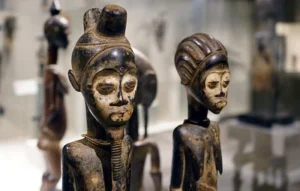
Becoming a diviner or priest usually involves a rite of passage; candidates undergo training away from society in a seminary where metaphorically they die so as to become a new person, then return to serve their gods in their communities.
Now prepared to act as the mouthpiece of his god, the priest is in certain traditions simply a medium, other trained persons being needed to interpret the gestures that he makes when possessed.
In others, he himself acts as an interpreter of the will of the god in the manner of a diviner.
The Nuer priest, or kuaar, has a mystical relationship with the earth; by virtue of this relationship, his curses are thought to have a special potency that can affect not only crops but a person’s general welfare.
However, the main services performed by the kuaar are in connection with the homicide, a deed which puts the killer in a situation of extreme danger and provides grounds for a blood feud. Through sacrifice the priest enables the killer to negotiate a settlement, normal social relations to be restored, and the wrongdoer to be reintegrated. Though the roles of priest and prophet cannot always be easily distinguished, the prophet is more of an outsider whose main concern is with the wider moral community, which need not be defined by language, kinship, ethnicity, or territory.
It is usually at times when relations between its members are severely strained or when outside forces threaten its autonomy that the prophet’s activities are given the greatest importance.
Prophets like Kinjikitile of Tanzania rose to prominence during the Maji Maji Uprising of 1905-1907 against colonial domination.
The prophet, however, is not solely concerned with crisis, nor does he derive his legitimacy from the leadership that he provides at such times; he is fundamentally a charismatic leader endowed with moral authority and he is followed because of the spiritual force or power that his followers believe possesses and moves him.
While, as we have seen, priests, diviners, and prophets can be possessed, there are also professional mediums.
Among the Shona of Zimbabwe, when ancestors wish to communicate directly with descendants, they are believed to choose a spokesman (who may be either a man or a woman). The careers of most mediums develop out of a state of crisis. For example, if after falling sick a person fails to respond to treatment of any kind, then, depending on the age of that person (he or she must not be too old), it may be concluded that the sickness is not a disease but has been brought on by a spirit.
The individual who is chosen as the spokesman is described as being grabbed by the spirit of the ancestor and from this point on the latter takes control of the one he possesses. When possessed, the medium loses all control of body and mind and is referred to as “pocket” or “little bag”, implying that he or she is simply a receptacle or vessel for the spirit of the ancestor.
Though such mediums have no special knowledge of their own and no unusual characteristics, they are nonetheless regarded as unique, being as close as anyone can ever be to the divinity.
In Candomble and the other African-derived religions of Brazil, possession of mediums by the gods called in from Africa through drumming and chanting is more controlled than in Zimbabwe.
But in Brazil, as in Zimbabwe, it is regarded as the greatest of spiritual achievements and rewards. The medium—referred to as a cavalo (horse)—becomes a god (or in the case of an ancestral cult, an ancestor) and enjoys that status, honour, and power for the duration of the possession; he or she temporarily experiences what it was like to be African prior to slavery.
SICKNESS AND HEALING
Many illnesses are attributed to a combination of spiritual, psychological, and social factors and are treated by ritual, medical, and social remedies.
In African society, sickness and death are not purely individual matters but are conceived of as part of the moral, social, and spiritual world of the community; accordingly, they are treated with a combination of spiritual, medical, and psycho-social remedies.
This is particularly true of untimely, unexpected, and apparently accidental death.
In cases of serious illness that do not readily respond to treatment, religious specialists—diviners, priests, prophets, mediums, medicine men—are called upon to use their privileged access to the spiritual world to diagnose the causes. Among the Akan of Ghana, such experts are thought to “have eyes” to see the spirits and to know the truth unknown to others. However, the social and moral dimension is never far from people’s thoughts for, while the priest is communing with the spirits, the social behaviour and relations of the sick person and of the community as a whole are examined.
Some of the most frequently diagnosed mystical causes of illness are the revenge of a neglected spirit or of an ancestor unhappy at the violation of time-honoured custom, or witchcraft or sorcery. The religious specialist also prescribes a number of preliminary therapeutic measures to be taken, including reparation and expiatory sacrifices.
Subsequent treatment involves the herbalist who, since the approach is patient-centred rather than disease-centred, will provide the necessary medicines and plants appropriate to the particular case.
WITCHCRAFT AND SORCERY
African witchcraft and sorcery (see Magic (sorcery)) are sometimes mutually distinguished on the basis of intention.
Among the Azande there exists the belief that witches inherit a substance called Mangu, which can be activated by hatred to exert a menacing, mystical influence over society. Witchcraft is thus a hereditary psycho-physical power. The sorcerer, on the other hand, consciously uses the techniques of magic ngwa, with which he activates harmful medicines and substances of a mystical kind and directs them against a particular victim. While some scholars question the wisdom of applying this distinction widely in Africa, others have found parallels to it, for example among the Tswana-, Lovedu-, and Sotho-speaking peoples of South Africa and the Chewa of east-central Africa.
Some scholars believe that the practice of making allegations of witchcraft against an individual may serve several purposes: it may provide reasons for an event that would otherwise remain unintelligible and unresolved in a society that does not believe in chance; it may also be used as a device for dismantling relationships and rejecting obligations that have become redundant, or for facilitating changes in the social system such as the division of a village or lineage group.
Introspective cases, where an individual makes accusations of witchcraft against themselves, are more common among women and are found mostly in western Africa; they generally consist of claims made by the self-accusing witch to have killed or caused the death of her children by spiritually devouring their life-force or soul.
In such cases, the motivation is believed to be very different, concerning women’s need to claim attention and respect in societies that grant them only low status.
This interpretation is derived from studies of peripheral possession in cults such as the Zar cult found in Somalia, the Sudan, and elsewhere, where “possessed” women fall ill and require treatment that their husbands are obliged to provide if they wish to see their wives return to normal and everyday life resumed.
In cases of both peripheral possession and self-accusation of witchcraft, women, normally low in status on account of lack of public and private recognition, become, for a time at least, highly privileged.
This interpretation is derived from studies of peripheral possession in cults such as the Zar cult found in Somalia, the Sudan, and elsewhere, where possessed women fall ill and require treatment which their husbands are obliged to provide if they wish to see their wives return to normal and everyday life resumed. In cases of both self-accusatory witchcraft and peripheral possession, women, normally low in status on account of lack of public and private recognition, become, for a time at least, highly privileged.
There are few signs of witchcraft dying out even in modern urban and industrial settings. Indeed, evidence from South Africa suggests that it is on the increase.
RITES OF PASSAGE, SACRIFICE, AND THE GOALS OF AFRICAN RELIGION
While spirituality and mysticism are certainly important, African traditional religion is also concerned with the realities of daily life.
This is very clearly expressed in rites of passage and the rites of sacrifice that accompany them.
Rites of passage effect the transition from one natural cycle to another, from one season to another, and from one stage of life and social position to another. They consist of three main parts: the separation from the community of the individuals undergoing the rite; a rite of transition that involves the re-making, social and moral, of those individuals; and a rite of reintegration by means of which they are received back into the community with new rights and obligations.
The rite of transition, known as the liminal phase of the rite, is the most important of the three stages, for it is during this period that those undergoing the rite are socialized into their new roles and internalize the norms and values associated with these.
Ritual of this kind enables a society to shape and mould consciousness, moral values, and social behaviour according to established norms legitimated by tradition. Where there is ritual there is sacrifice: blood sacrifice in the form of animal offerings to the gods is considered extremely potent. There are many kinds of sacrifice and what makes a sacrifice is intention. Thus, rice or a cake can be a sacrifice. In parts of Africa and in areas of the Americas where African religions are practised (see Blacks in the Americas) each god has his or her preferences; for example, Shango, the Yoruba god of thunder and lightning, has a taste for cock, sheep, crab, and turtle sacrifices.
Among the Nuer of the Sudan, the most perfect sacrifice is the most treasured possession a person can acquire—a cow or ox. Cattle not only have an important economic and utilitarian significance in Nuer society but they are also of great emotional, psychological, symbolic, and aesthetic value, hence the equation of all sacrificial objects with cattle.
This is so much the case that, whatever is offered, be it a sheep, a goat, or a vegetable, it is symbolically regarded as a cow.
Just as the concept of the ancestors permeates Malagasy life, so that of cattle is all-pervasive in Nuer life.
There is cattle poetry, and there are cattle praise songs, and cattle honorific names, while the initiation gift and symbol of youth is an ox.
Illness, infertility, the birth of twins, settlements of feuds, all rites of passage, and many other experiences and situations are occasions for sacrifice.
Most sacrifices are of the piacular (or expiatory) type and are performed for the prevention or removal of some misfortune or danger, especially a moral or spiritual crisis.
While, between different societies, there can be variations in the manner in which sacrifice is performed, the pattern followed generally resembles the Nuer model: the presentation of the victim to God or Kwoth; its consecration (the Nuer do this by rubbing it in the ashes of cattle dung); the invocation in which the priest tells God and those present the intention of the sacrifice; and the offering, or immolation. Among the Nuer, if the offering is an ox it is immolated by being speared, and if a sheep or goat, by having its throat cut.
In African traditional religion the aim of ritual is to explain and control the workings of the material world. However, there is constant communication between the spiritual and material worlds, so as to restore the harmony between them that through human error was lost at the beginning, and the lack of which explains the precarious and incomplete state of the present material world.
AFRICAN RELIGIONS IN THE AMERICAS
It was mainly because of the transatlantic slave trade, which was active from the late 15th to the mid-19th century, that African traditional religions entered North and South America and the Caribbean.
Brazil, which continued to import slaves long after most other countries had abolished the slave trade in the early 19th century, and only fully abolished slavery within the country in 1888, was home to the largest number of enslaved Africans anywhere in the world.
The black slave population preserved and handed down African beliefs and practices, so that today African-Brazilian religion exercises considerable religious, cultural, and economic influence across the country. This is particularly so in north-eastern Brazil, in the states of Bahia and Pernambuco where it is known as Candomble and Xango respectively.
African-Brazilian religions, which have spread to Argentina, Paraguay, and elsewhere in Latin America, take many forms. For example, while Candomble depends considerably on African philosophy, belief, and ritual, especially of the Yoruba and Nago kind, Umbanda, found mostly in southern Brazil, is a more Europeanized version of African religion and incorporates many of the ideas of the 19th-century French spiritist Hypolite Ravail (alias Alan Kardec).
To a greater or lesser extent, the beliefs and rituals in all forms of African religion in Latin America and the Caribbean are juxtaposed with those of Catholicism.
Santería in Cuba, Shango in Trinidad, and voodoo in Haiti have a history similar to that of African-Brazilian religion and, like the latter, carried largely by migrants, they have been taken to some of North America’s major cities, including Miami, Los Angeles, Chicago, and New York. Religious experts and latter-day missionaries now travel from Africa, Brazil, Cuba, Haiti, and the Caribbean to instruct increasing numbers of African Americans and their descendants in traditional beliefs and rituals. At the same time, new forms of these religions are also emerging in North America. One such is Santerismo, which is composed essentially of spiritualistic beliefs and practices and Santería.
These new forms are proving popular among Hispanic groups in New York and Los Angeles, among other cities, greatly internationalizing what were once seen as religions of and for Africans.
TRADITIONAL RELIGIONS IN AFRICA TODAY
Meanwhile, in Africa itself, the traditional religions continue to provide the most effective system of social psychology and spiritual fulfilment in many rural parts and increasingly in the confusing and highly unpredictable context of urban life. Even in areas where both Christianity and Islam continue to increase their hold, they are almost always soon subjected to a process of localization.
Moreover, the traditional African systems of belief and practice have claimed back in recent times a small but influential number of the educated elite who once abandoned them for one or other of these world religions.
Throughout sub-Saharan Africa today, the most dynamic forms of religion are those born of the interaction between traditional religion and Christianity or Islam.
The value placed on the mystical union between the human and the divine has not diminished. Faith in spiritual healing, in the protective power of the ancestors, and in the mystical power to avenge wrongdoing is also held with tenacity and conviction, while it is simultaneously shaped by its interaction with African Christian and African Muslim faith and practice.



